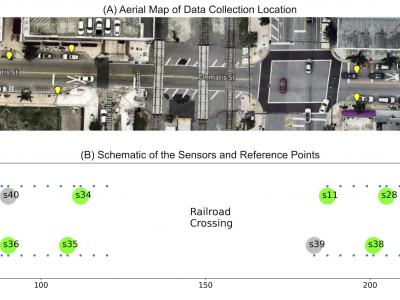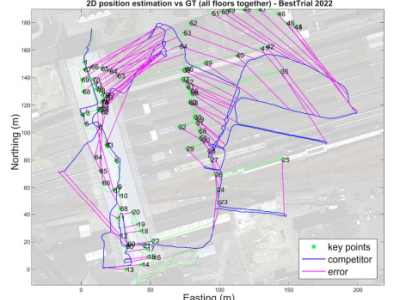Wireless Networking

The dataset accompanies the study titled “Rate Adaptation Algorithms in WLANs: A Comparative Analysis of Iwl-Mvm-Rs and Minstrel-HT Under Different Frame Error Causes.” This dataset contains simulation results that evaluate the performance of the Iwl-Mvm-Rs and Minstrel-HT Rate Adaptation Algorithms (RAAs) under varying frame error conditions, specifically low Signal-to-Noise Ratio (SNR) and collision-induced errors.
The data was generated using ns-3 simulations across four scenarios:
- Categories:
 43 Views
43 ViewsThis dataset consists of network packet traces collected in 2023 on the 5G infrastructure deployed at Chalmers University of Technology.
The dataset includes 1,912 pcap files, distributed across 8 folders. Each pcap file captures 1 minute of encrypted network traffic generated by one of the following 8 popular mobile applications:
- Categories:
 921 Views
921 ViewsThe TiHAN-V2X Dataset was collected in Hyderabad, India, across various Vehicle-to-Everything (V2X) communication types, including Vehicle-to-Vehicle (V2V), Vehicle-to-Infrastructure (V2I), Infrastructure-to-Vehicle (I2V), and Vehicle-to-Cloud (V2C). The dataset offers comprehensive data for evaluating communication performance under different environmental and road conditions, including urban, rural, and highway scenarios.
- Categories:
 1186 Views
1186 ViewsThe Unified Multimodal Network Intrusion Detection System (UM-NIDS) dataset is a comprehensive, standardized dataset that integrates network flow data, packet payload information, and contextual features, making it highly suitable for machine learning-based intrusion detection models. This dataset addresses key limitations in existing NIDS datasets, such as inconsistent feature sets and the lack of payload or time-window-based contextual features.
- Categories:
 2211 Views
2211 Views
The dataset consists of uplink channel gains, downlink channel gains and uplink to downlink channel gains along with corresponding power allocations for uplink users and downlink users across all subcarriers. Additionally, it consists of NOMA decoding order for successful implementation of SIC at NOMA receiver. The number of UL users and DL users are considered as N=M=6, and subcarriers are S=9. Each column in the dataset is a sample for fading channel realization and it should be converted back to the matrix to compute sumrate.
- Categories:
 192 Views
192 ViewsA modern Wi-Fi-enabled device (e.g., a smartphone) can spontaneously emit unencrypted and anonymized signals to the environment in search of an access point. This signal is called a probe request. Since it is freely available in the open air, one can build a sensor from a Wi-Fi adapter to capture the signal. Once captured, its signal strength can be measured in the form of a Received Signal Strength Indicator (RSSI).
- Categories:
 193 Views
193 ViewsThis dataset was developed in the context of the NANCY project and it is the output of the experiments involving streaming a virtual reality (VR) video in a 5G coverage expansion scenario. Additionally, iPerf3 experiments in both TCP and UDP modes were carried out. The coverage expansion scenario involves a main operator and a micro-operator which extends the main operator’s coverage and can also provide additional services.
- Categories:
 171 Views
171 ViewsThis dataset was developed in the context of the NANCY project and it is the output of the experiments involving cyberattacks against services that are running in a 5G coverage expansion scenario. The coverage expansion scenario involves a main operator and a micro-operator which extends the main operator’s coverage and can also provide additional services, such as Artificial Intelligence-based cyberattack detection.
- Categories:
 472 Views
472 ViewsThis dataset contains LoRa physical layer signals collected from 60 LoRa devices and six SDRs (PLUTO-SDR, USRP B200 mini, USRP B210, USRP N210, RTL-SDR). It is intended for use by researchers in the development of a federated RFFI system, whereby the signals collected from different receivers and locations can be employed for evaluation purposes.
More details can be found at https://github.com/gxhen/federatedRFFI
- Categories:
 928 Views
928 Views






